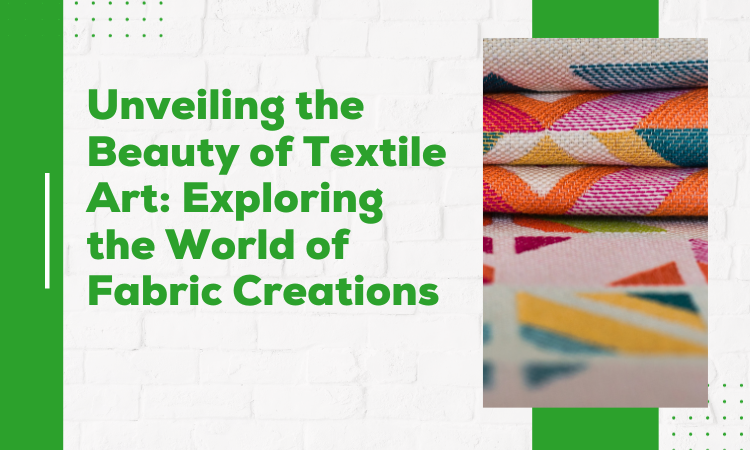Table of Contents
Introduction:
Discovering the Versatility of Textile Products in Contemporary Art. Explore the mesmerizing world of fabric creations, from intricate tapestries and intricately woven rugs to avant-garde textile installations. Learn about the various techniques and tools used in textile art, such as fabric art, textile paint, and embroidery, and how they can transform ordinary fabrics into stunning masterpieces. Experience the enchantment of textile artwork that showcases the harmonious fusion of creativity and craftsmanship.
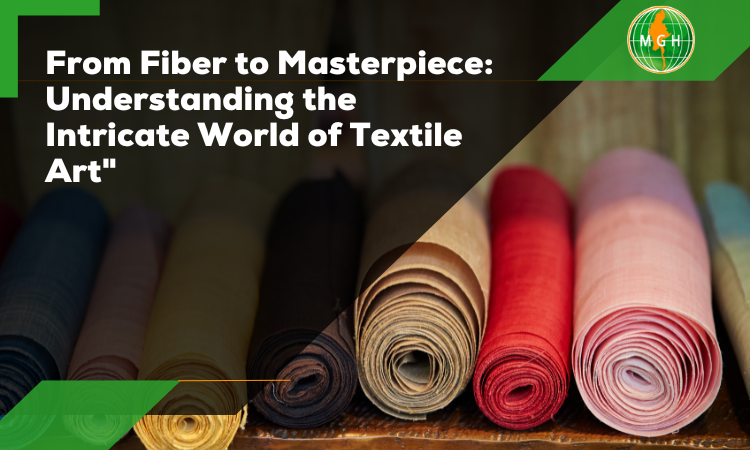
1. From Fiber to Masterpiece: Understanding the Intricate World of Textile Art
Textile art, also known as fabric art, is a captivating form of artistic expression that transforms ordinary fibers into breathtaking masterpieces. Combining techniques such as weaving, embroidery, fabric dyeing, and textile painting, artisans bring to life intricate compositions that showcase both their technical skill and artistic imagination.
One of the distinguishing features of textile art is the diverse range of materials used. Textile artists work with fabrics of various textures, colors, and patterns, carefully selecting each element to enhance the overall aesthetic of their creations. From delicate silk to sturdy linen, every fabric speaks its own language and contributes to the unique narrative woven by the artist’s hand.
The process behind textile art is a meticulous one, requiring immense patience and attention to detail. Starting with a concept or inspiration, artists sketch, plan, and experiment with different techniques and materials to achieve the desired effect. Whether it’s employing traditional weaving methods, using textile paints to create vibrant designs, or incorporating intricate embroidery, textile art seamlessly blends innovation with traditional craftsmanship.
Textile art is not confined to traditional canvas boundaries. It transcends the two-dimensional realm, often taking on three-dimensional forms through quilting, soft sculpture, and fiber installations. The tactile nature of textiles adds a sensory dimension to the viewing experience, encouraging viewers to explore the artwork through touch and embrace its tangible beauty.
As an art form, textile art offers artists a limitless canvas to express their creativity. It allows them to blur the lines between craft and fine art, inviting viewers on a journey of texture, color, and form. Whether it’s a wall hanging, wearable art, or a stunning textile sculpture, textile art captivates and inspires, breathing life into fibers and transforming them into true masterpieces.
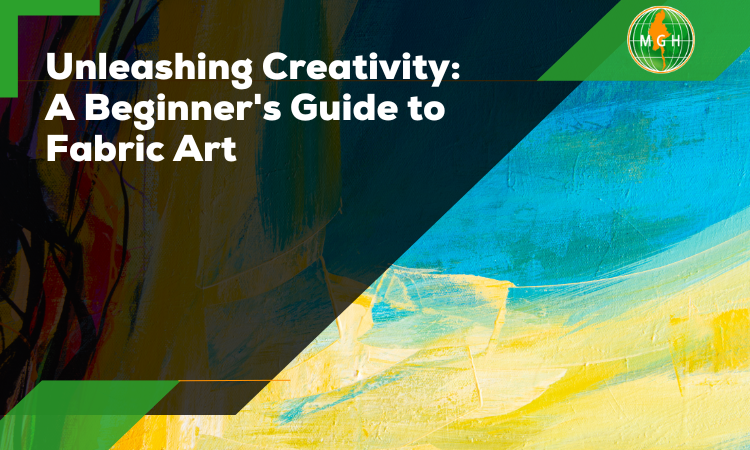
2. Unleashing Creativity: A Beginner's Guide to Fabric Art
Understanding Fabric Art
ile art encompasses a wide range of techniques and mediums, making it a diverse and exciting field. traditional hand embroidery to modern fabric painting, there are numerous ways to explore and experiment with textile art. Fabrics such as cotton, silk, and linen serve as the canvas for your creative ideas, offering a tactile and versatile surface to work withSection: Tools and
To embark on your fabric art journey,’s essential to gather the necessary tools and materials. Acquiring a set fine quality fabric paints textile dyes, and brushes will allow to bring your imagination to life. Additionally invest in a variety of fabrics in different and colors to add depth and character to your artworkSection: Exploring Techniques
Experimenting with various techniques is crucial in fabric art. Start by researching and practicing basic techniques like hand sewing, embroidery stitches, and fabric manipulation. As you gain confidence, you can move on to more advanced techniques like block printing oriqué. Remember, creativity is a continuous process, and each exploration will add a unique touch to your textile artwork.
Inspiration and Creativity
Inspiration is the backbone of textile artistry. Look for inspiration in everyday objects, nature, or personal experiences. Explore different art forms, visit galleries, and connect with other artists to expand your creative horizons. Immerse yourself in the world of colors, textures, and patterns, and let your imagination run wild.
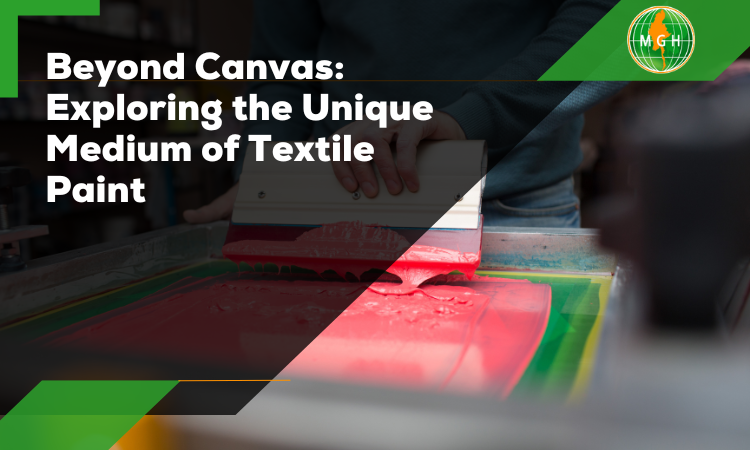
3. Beyond Canvas: Exploring the Unique Medium of Textile Paint
Textile art, often known as fabric art, harnesses the exquisite properties of textiles to create captivating artwork. While traditional paintings frequently adorn canvases, textile artists embrace the versatility of fabrics and employ a distinctive medium known as textile paint. This extraordinary form of expression grants artists the power to combine various techniques and explore unconventional surfaces.
Textile paint, formulated specifically for fabric application, offers a plethora of possibilities to textile artists. With an impressive range of vibrant colors, textile paint allows artists to bring their imagination to life on various textile products. From clothing and home decor items to tapestries and quilts, this unique medium adds a touch of artistic flair to everyday items.
What makes textile art truly remarkable is its tactile nature. Unlike traditional paintings, textile artwork invites viewers to experience the art through touch. Textile paint seamlessly merges with the fabric, enhancing its texture and allowing artists to create dimensional effects that enthrall the senses. By using different brush strokes, layering techniques, and experimental applications, the artists can add depth and intricacy to their creations.
Beyond its visual appeal, textile art represents a profound connection to history and culture. Throughout centuries, different civilizations have employed fabrics as their primary medium of artistic expression. Textile artwork incorporates techniques handed down through generations, such as embroidery, hand-painting, and block printing, preserving traditional craftsmanship while incorporating contemporary influences.
Whether you are an art enthusiast or simply appreciate the beauty of textiles, exploring the world of textile paint opens up a realm of artistic possibilities. From breathtaking wall hangings to wearable art, textile artwork presents a unique and captivating medium that captures both the eyes and the heart.
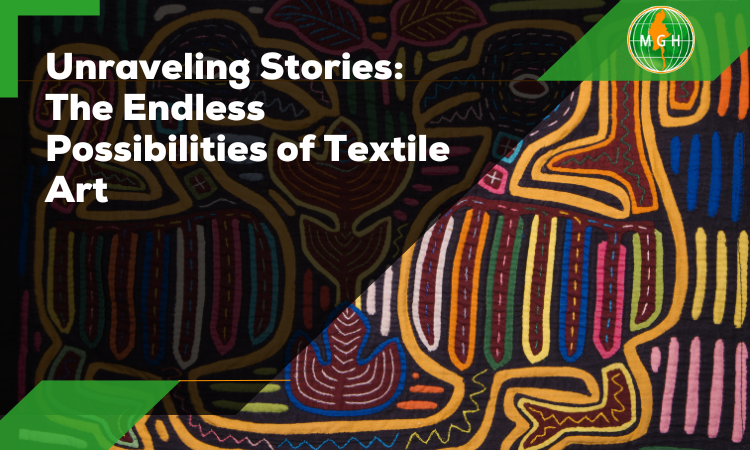
4. Unraveling Stories: The Endless Possibilities of Textile Art
Textile art, also known as fabric art, offers endless possibilities for artistic expression. Utilizing various textile techniques, such as embroidery, quilting, and felting, artists are able to create stunning pieces that captivate viewers and unravel stories within their intricately woven threads.
One of the most fascinating aspects of textile art is the use of textile paint to bring vivid colors and textures to life. Artists can experiment with different types of dyes and paints, allowing them to achieve a wide range of effects and moods in their artwork. Whether it’s bold and vibrant or subtle and delicate, textile art can truly evoke emotions through its visual language.
The versatility of textile art knows no bounds, as artists are not limited to traditional canvases. Everyday objects like clothing, accessories, and even furniture can be transformed into unique works of art through the application of textile techniques. This opens up new avenues for creativity, allowing textile artists to challenge conventions and redefine the boundaries of traditional art forms.
Beyond its aesthetic appeal, textile art also holds deep cultural and historical significance. Many cultures have a rich tradition of textile craftsmanship, with intricate patterns and symbols passed down from generation to generation. By incorporating these elements into their artwork, artists not only pay homage to their heritage but also weave narratives that transcend time and connect with people on a profound level.
Textile art is a dynamic and ever-evolving field that continues to push the boundaries of creativity. It offers a platform for artists to explore new materials, experiment with techniques, and tell stories through fabric, thread, and color. Whether it’s a thought-provoking tapestry, an intricately embroidered garment, or a whimsical fabric sculpture, textile art has the power to engage, inspire, and delight viewers from all walks of life.
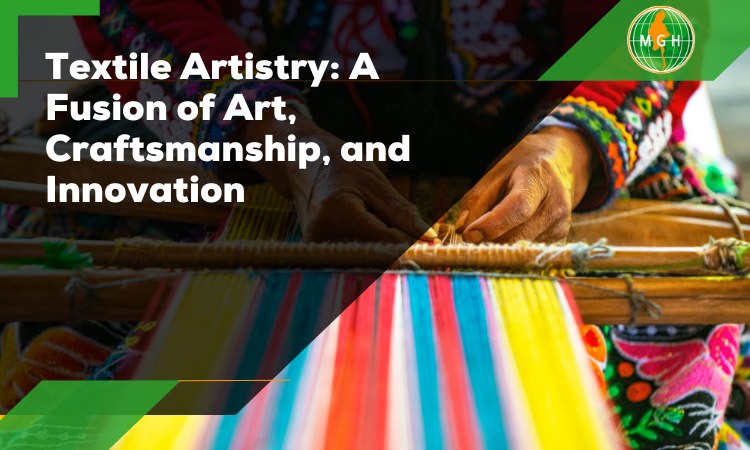
5. Textile Artistry: A Fusion of Art, Craftsmanship, and Innovation
In the realm of artistic expression, the fusion of art, craftsmanship, and innovation is beautifully epitomized by the world of textile art. From exquisite tapestries to contemporary clothing designs, textile art marries creative vision with technical expertise, resulting in stunning visual masterpieces that captivate the senses.
One of the main elements that distinguishes textile art from traditional art forms is the medium itself. Fabric art provides a unique canvas for artists to express their ideas, as different textures, colors, and patterns come together to create a distinct sensory experience. Whether it’s through hand-weaving, quilting, or embroidery, textile artists push the boundaries of traditional techniques, combining age-old craftsmanship with their own unique flair.
Another exciting aspect of textile artistry lies in the realm of innovation. With the advent of modern technology, artists are now able to explore new avenues of creativity and experimentation. The emergence of textile paints and dyes, for example, has allowed artists to create intricate designs on fabric with vivid colors and unparalleled precision. This newfound freedom enables textile artists to breathe life into their creations, transforming simple textiles into breathtaking works of art.
Moreover, textile art has transcended its traditional boundaries, extending its influence to the realms of fashion, interior design, and even fine art galleries. It has become a medium of choice for many contemporary artists seeking to challenge societal norms and blur the lines between art and craft. By incorporating textile elements into non-traditional settings, these artists are pushing the boundaries of creativity and forging new paths of artistic expression.
6. From Traditional to Contemporary: The Evolution of Textile Artwork
Textile art has come a long way, evolving from traditional techniques to a more contemporary and innovative form of expression. Over the years, artists have pushed the boundaries of this medium, experimenting with different materials, techniques, and styles to create stunning textile artwork that captures the imagination.
In the past, textile art primarily referred to the production of functional fabric products such as clothing, tapestries, and quilts. However, as the art world has evolved, so too has the definition of textile art. Today, textile art encompasses a wide range of techniques and materials beyond traditional fabric production.
For instance, artists now explore the use of textile paint to create intricate designs on fabric, merging the worlds of painting and textile art. This innovative approach allows artists to combine different textures, colors, and patterns to create captivating visual narratives.
Moreover, contemporary textile artists often experiment with unconventional materials, such as recycled fabrics or industrial textiles, pushing the boundaries of traditional techniques. This creative exploration gives rise to unique and thought-provoking pieces that challenge our preconceived notions of textile art.
One of the most exciting aspects of the evolution of textile artwork is the blending of traditional and contemporary techniques. Many artists combine traditional stitching methods with modern digital printing or embroidery machines. This fusion of old and new techniques results in visually stunning and conceptually rich artwork that pushes the boundaries of what is possible.
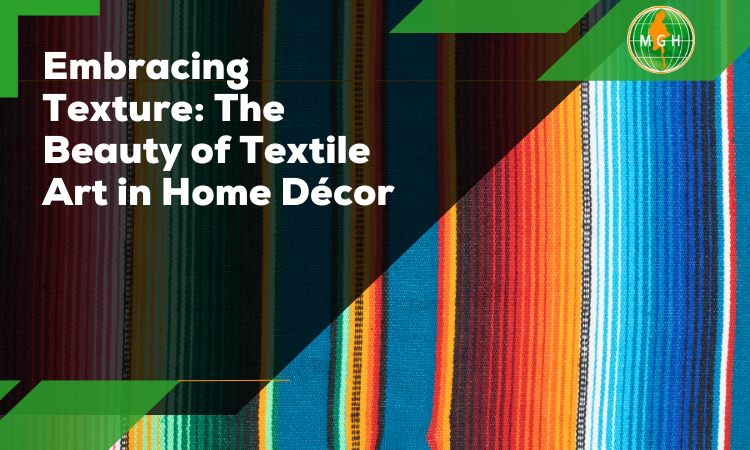
7. Embracing Texture: The Beauty of Textile Art in Home Décor
Forget flat, forget predictable. Step into a world where walls whisper vibrant stories, where tapestries sing vibrant lullabies, and where textures dance beneath your fingertips. This is the world of textile art, a realm where fabric transcends its utilitarian purpose to become a living, breathing element of your home decor.
Gone are the days of sterile white walls and mass-produced prints. Textile art invites you to embrace the tactile symphony of woven stories. Imagine a macrame wall hanging cascading down, its knotted strings catching the light like sunbeams through leaves. Picture a hand-woven tapestry bursting with color, its fibers whispering of ancient traditions and bold palettes. Feel the textured surface of a felted wall sculpture, its gentle curves a soothing balm to the eye.
Textile art transcends mere decoration; it becomes an immersive experience. Each piece invites you to explore its depths, to trace the journey of thread to masterpiece. A piece of fabric art adorned with textile paint becomes a canvas for vibrant narratives, a whisper of the artist’s soul woven into every brushstroke.
But the beauty of textile art lies not just in aesthetics, but in its versatility. Its warmth softens stark lines, its textures add depth to sterile spaces, and its colors inject personality into every corner. A woven throw blanket draped over a chair becomes an instant invitation to cozy comfort, while a hand-stitched cushion transforms a forgotten nook into a haven of creativity.
Whether you’re drawn to the earthy elegance of macrame, the vibrant energy of fabric painting, or the timeless stories woven into traditional tapestries, textile art offers a gateway to a world of possibilities. It’s an invitation to break free from the confines of the ordinary, to embrace the beauty of handmade textures, and to turn your home into a canvas for your own unique story. So, let your fingers explore the tactile symphony of threads, let your walls sing with vibrant textures, and discover the transformative power of embracing the beauty of textile art in your home decor.
8. The Language of Threads: Symbolism and Meaning in Textile Art
Textile art has long been regarded as a powerful medium for self-expression and storytelling. Through the intricate language of threads, artists are able to convey a rich tapestry of symbolism and meaning in their creations. From fabric art to textile paint, the world of textile artwork holds a myriad of possibilities for artists explore.
In textile art, every choice of material, color, and stitch carries its own significance. The choice of fabric can evoke a particular emotion or set the tone for the artwork. For example, silk may suggest delicacy and elegance, while rough burlap can indicate strength and resilience.
Similarly, the colors used in textile art can hold deep symbolic meanings. Blue may represent tranquility and calmness, while red can symbolize passion and energy. By combining different colors harmoniously or contrasting them boldly, textile artists can create a visual language that speaks directly to the viewer.
One of the most fascinating aspects of textile art is the use of stitching techniques. Each stitch can serve as a mark of intention and craftmanship. From delicate embroidery to bold quilting, stitches can create patterns that convey stories and experiences. They can also be used to depict symbolic elements such as flowers, animals, or abstract shapes, further enriching the narrative of the artwork.
Through the language of threads, textile artists are able to communicate personal narratives, cultural heritage, and reflections on society. Whether it’s a wall hanging, a wearable garment, or a sculptural piece, textile art has the ability to captivate and engage viewers on both a visual and emotional level.
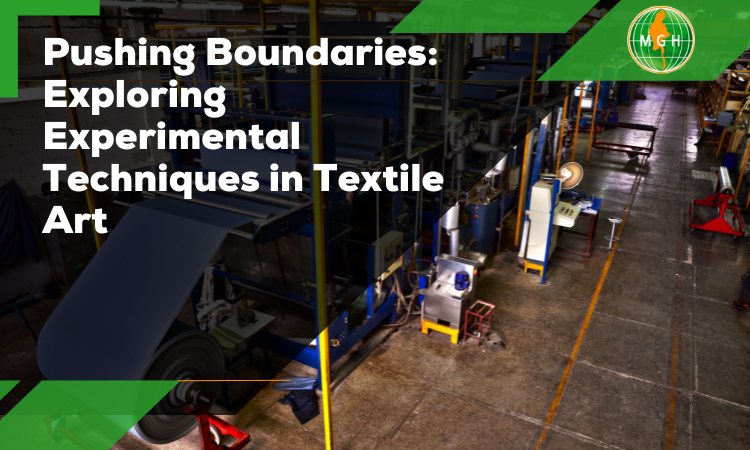
9. Pushing Boundaries: Exploring Experimental Techniques in Textile Art
Textile art has been an integral part of human culture for centuries, with artists continuously pushing boundaries to create captivating and innovative pieces. By combining various fabric manipulation techniques, textile artists bring life to their imagination and transform simple textiles into awe-inspiring works of art. In this blog section, we delve into the realm of experimental techniques in textile art, exploring the immense potential and possibilities they offer.
Fabric art, with its vast array of techniques, serves as a medium for artists to express themselves through textures, colors, and patterns. One such innovative method is textile paint, allowing artists to unleash their creativity onto fabric and showcase their unique perspectives. With a pioneer spirit, textile artists experiment with different types of textile paints, from traditional acrylics to innovative heat-set products, altering the texture and appearance of the fabric to suit their vision.
However, textile art goes beyond just paint and extends into intricate fabric manipulation techniques. Artists explore diverse methods such as hand-stitching, embroidery, quilting, and even unconventional approaches like burning or distressing textiles. These experimental techniques add depth and dimension to the artwork, making each piece a masterpiece in its own right.
Whether it’s creating textile sculptures, quilts, or wearable art, artists continue to push boundaries and pioneer new techniques, blurring the lines between traditional craftsmanship and contemporary art. Textile artwork is evolving, capturing the imaginations of both artists and art enthusiasts alike.
10. Unveiling the Masterminds: Celebrating Influential Textile Artists Throughout History
Discovering the Beauty of Fabric Art
Fabric art, a subcategory of textile art, showcases the versatility of fabrics as a medium for artistic expression. Artists manipulate textiles through techniques such as quilting, appliqué, and embroidery to create stunning works that are both visually striking and emotionally evocative. Exploring the depths of color, texture, and form, fabric art brings life to the seemingly ordinary fabric and transforms it into extraordinary masterpieces.
The Magic of Textile Paint
Textile paint has revolutionized the world of textile art, enabling artists to apply vibrant colors and intricate designs directly onto fabric. This versatile medium has opened up new possibilities for creativity, allowing artists to create wearable art, soft furnishings, and unique pieces that blur the boundaries between art and fashion. By incorporating various techniques, such as hand-painting, stenciling, and screen printing, textile artists breathe life into their creations, leaving a lasting impression on both the art world and fabric enthusiasts.
Unleashing Creativity Through Textile Artwork
Textile artwork encompasses a wide range of techniques and styles, with artists constantly pushing boundaries and experimenting with unconventional materials. From thread and yarn installations to sculptural fabric forms, these innovative creations challenge traditional notions of art-making. Through their imagination and skill, textile artists bring stories to life, communicate messages, and provoke thought, inspiring audiences to view textiles beyond their functional purpose.
Conclusion:
The world of textile art is truly mesmerizing, offering a wide range of fabric creations that showcase the beauty and creativity of skilled artisans. From intricate fabric art pieces to vibrant textile paintings, the possibilities are endless. Whether you’re a connoisseur or a beginner, exploring the realm of textile artwork is a delightful journey that unveils the true wonders of this unique craft.


